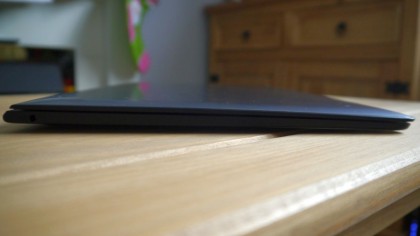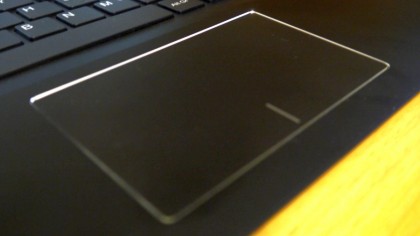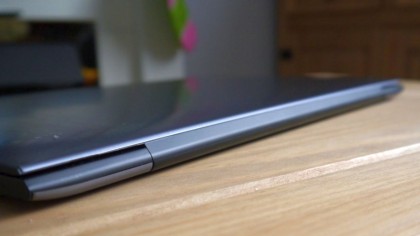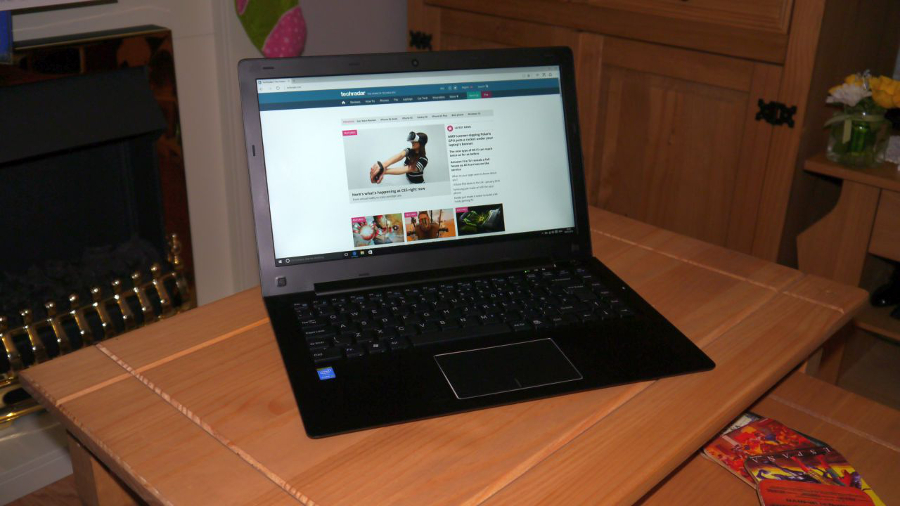Why you can trust TechRadar
Insider the laptop is the year-old, Broadwell-based Intel Core M-5Y10c, a 14nm part that first appeared in the Lenovo Yoga 3 Pro and later in the Apple MacBook. It is a dual-core processor that has a base clock speed of 800MHz but can turbo up to 2GHz.

We'd certainly prefer it if PC Specialist used higher-rated Core M parts like the 5Y-71, the 5Y-51 or the 5Y-31, all of which have the same TDP (4.5W), the same amount of cache (4MB), the same recommended price, the same graphics subsystem (Intel HD Graphics 5300) but a higher base frequency (900MHz to 1.2GHz), higher turbo frequency (2.4GHz to 2.9GHz) and higher maximum frequencies for graphics (850MHz to 900MHz).
The 5Y10c supports up to 16GB of system memory spread over two slots but the laptop vendor has chosen to offer two 4GB SODIMM DDR3 memory modules.
Space constraints also explain why low profile memory modules were used and why they were soldered to the motherboard preventing any future upgrades. Likewise, a 256GB M2. 2242 NGFF SSD was chosen instead of the cheaper but bulkier 2.5-inch SSDs.

We're puzzled by the chosen candidate for wireless connectivity. Indeed, the Azurewave AW-NB165NF, a part that combines 802.11n and Bluetooth 4.0 and sits in an M2 slot, is the one responsible for radio communication. Surely an 802.11ac module would have been a better fit in a notebook such as this.
The rest of the configuration includes the ubiquitous webcam, a 4-cell 5100mAh Lithium battery and a two-channel HD audio solution from Intel, and this is on par with what we've seen elsewhere. It is worth noting that the entire laptop is rated 24W (12v, 2A) which is extraordinarily low for a full-fledged device and shows how far we've progressed since the good old days.

Performance
Looking at the benchmarks, there are two ways to evaluate the numbers. When compared against laptops that use modern traditional processors like the Skylake-based Core i5-6200U, the Enigma performs relatively worse for a number of reasons. An aggressive power saving mode and an older graphics module – this Core M is now more than a year old – help explain that.
Against other Core M laptops and older laptops, the Enigma VI is definitely competitive especially given how cheap it is. If there's one sore point though, it is the battery performance which is about average at five hours. Do note, though, that the PCMark 8 benchmark is performed with the display set on maximum brightness.
Here are the benchmark scores for the PC Specialist Enigma VI in full:
- 3DMark: Ice Storm: 24529; Skydiver: 1261; Cloud Gate: 2403; Fire Strike: 338
- PCMark 8 Home: 1926
- PCMark 8 Work: 2510
- PCMark 8 Creative: 1809
- PCMark 8 Battery: 5 hours 0 minutes
- Cinebench 15: CPU (Points): 136; GPU (FPS): 15.13
- Geekbench 3: Single Core: 2131; Multi Core: 3633

Désiré has been musing and writing about technology during a career spanning four decades. He dabbled in website builders and web hosting when DHTML and frames were in vogue and started narrating about the impact of technology on society just before the start of the Y2K hysteria at the turn of the last millennium.
